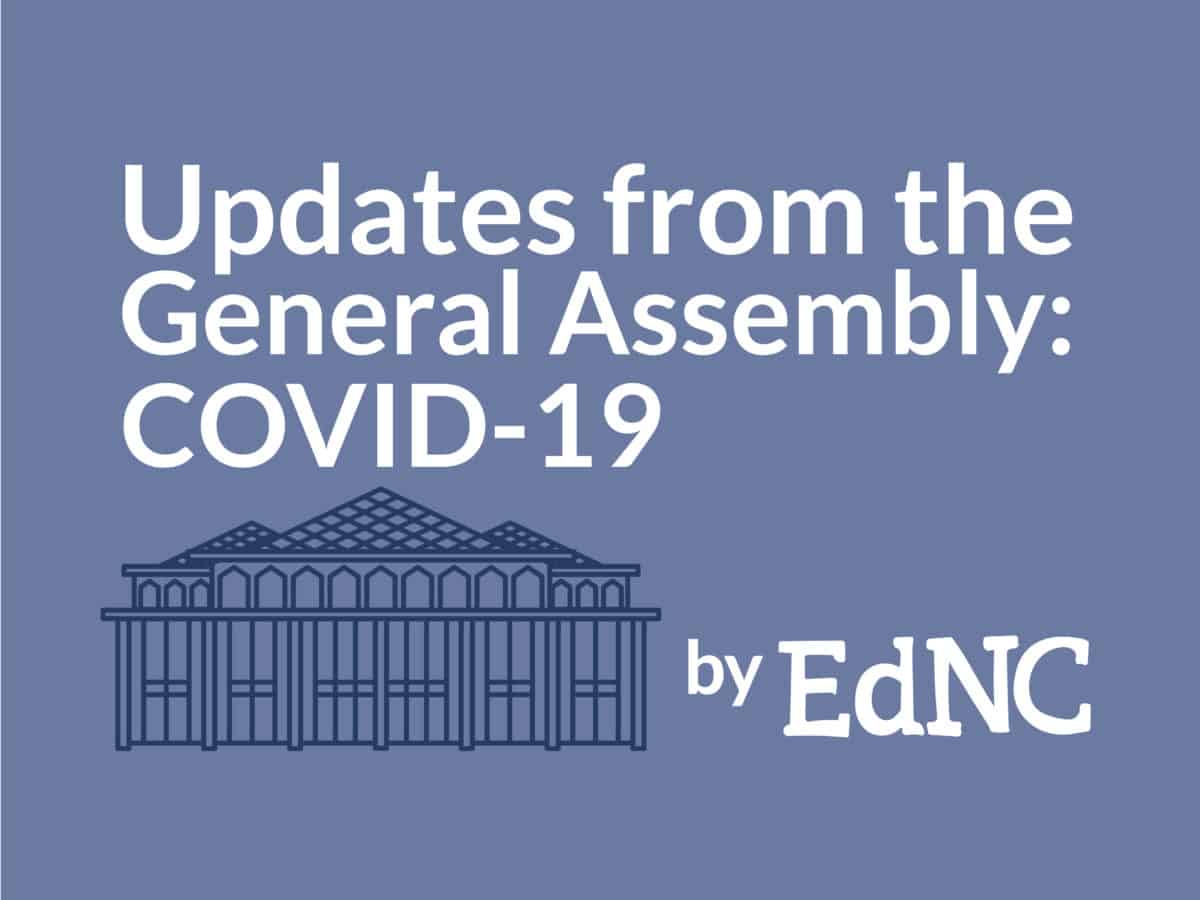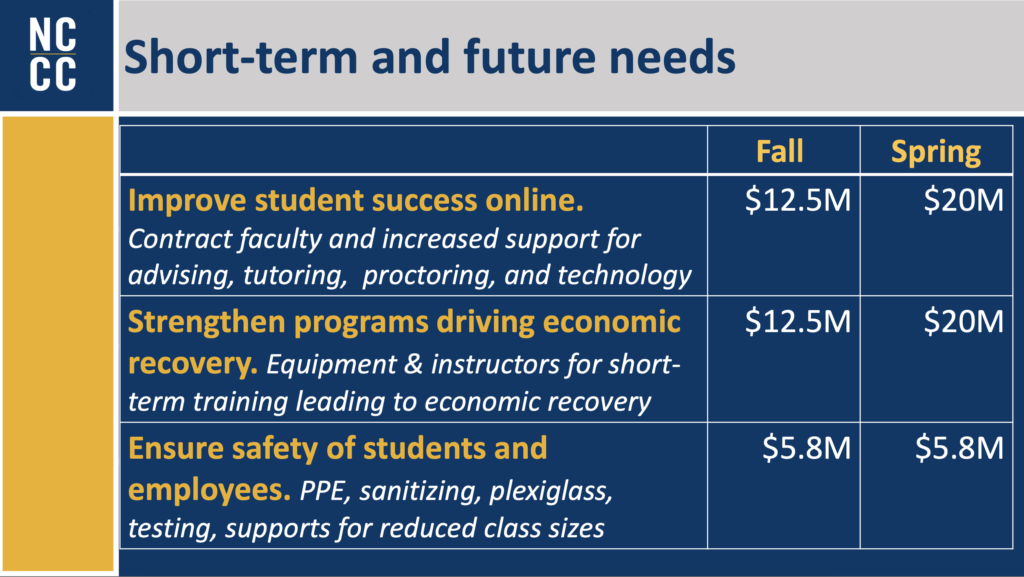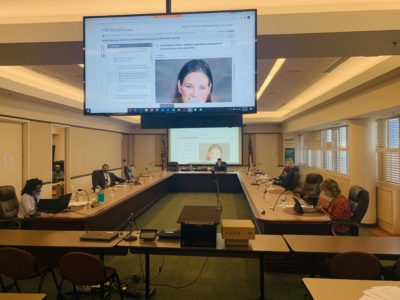
State education leaders are asking lawmakers for more than $120 million in Coronavirus Relief Funds (CRF) to help keep North Carolina school systems running this year. Meanwhile, state legislators have between roughly $500 and $900 million dollars in Coronavirus Relief Funds to address all of the state’s needs when it comes to the COVID-19 pandemic.
Rep. John Fraley, R-Iredell, said he is hopeful that more money will be forthcoming from the federal government for lawmakers to appropriate in the spring. In the meantime, he said lawmakers have to plan the best they can. Fraley is a co-chair of the education working group of the House Select Committee on COVID-19 and his comments came as the committee met today in advance of the return of lawmakers to Raleigh next week.
“It is very important to know that nothing is currently set in stone,” he said, adding later: “It’s still important for us to plan rather than for us to have to make instantaneous decisions. That’s what today is all about.”
The General Assembly met over the summer and began spending down the roughly $3.5 billion in federal COVID-19 relief funds granted to North Carolina. The state still has about $552 million in relief funds that can be used. There is also another $351 million that the state already had plans for, but those plans were contingent on the federal government loosening restrictions on how money can be spent. The federal government hasn’t yet, which means the money may be free to be used elsewhere.
Eric Davis, chair of the State Board of Education, presented to the committee on the funding requests from the State Board of Education and state Department of Public Instruction (DPI).
In total, the two groups are asking for more than $120 million in new money, though the specific asks are broken out into a number of categories. Davis said the most important ask is for personal protective equipment.
“Our first and most important priority is to provide the personal protective equipment and other resources necessary to continue to operate our schools safely,” he said. “Schools today that are operating in plan C we hope to soon be in plan B.”
He added that from there, the state hopes to see schools move into plan A.
The three plans were set out by Gov. Roy Cooper as possible scenarios for the schools to reopen this fall. Plan A would be all students in school with minimal safety precautions; plan B is some students in school buildings with safety precautions plus some remote learning; and plan C is all remote learning.
The governor chose Plan B, but districts had the option of choosing plan C if they wanted to, and the majority of school districts did so.
The General Assembly appropriated $7 million during the short session for personal protective equipment. Meanwhile, the state has also given schools thermometers and face protection, according to Davis’ presentation. Davis said the State Board and DPI are asking for an additional $44.5 million for personal protective equipment.
Other items DPI and the State Board are asking for include:
- Transportation funding so buses can be used to deliver meals, provide internet hot spots, and deliver non-digital instructional resources: $18 million
- Internet connectivity and broadband services: $15 million
- Exceptional children funding for students who lost needed services because of COVID-19: $17 million
- Training on the science of reading: $3,250,000
- Cybersecurity infrastructure: $5 million
- New teacher support program: $2,128,333
- School-based mental health: $16,532,156
- Space X Pilot program “using low orbit satellite and 100 hot spot connections, including ‘non-last mile connection’ to extend internet connectivity to our students and educators in very hard to reach locations”: $1 million
Davis also expressed the wish of education leaders that lawmakers hold harmless school districts for changes in Average Daily Membership. At its most basic level, you can think of Average Daily Membership as the number of students at a school measured at particular points in time. It’s more complicated than that, but this is a simple way of looking at it.
Districts get funded based on the number of students they think they’re going to have in a year. And then that funding is adjusted based on the number of students they actually end up having. Because of COVID-19, fewer students are showing up in many districts than projected, meaning districts may have their budgets adjusted down. However, if those students return this year after the budget has been adjusted, there won’t be a commensurate increase in the budget.
Davis said he and other education leaders are asking that the budget reductions not be made this year if a district’s ADM is less than projected.
Rep. Pat Hurley, R-Randolph, said she is hearing from schools in her district about what a serious problem this is.
“They definitely need this to stay as it is,” she said.
The committee also heard from the North Carolina Community College system about what COVID-19 relief needs it has for this year.
The system is asking for almost $80 million for the fall and spring semesters.



